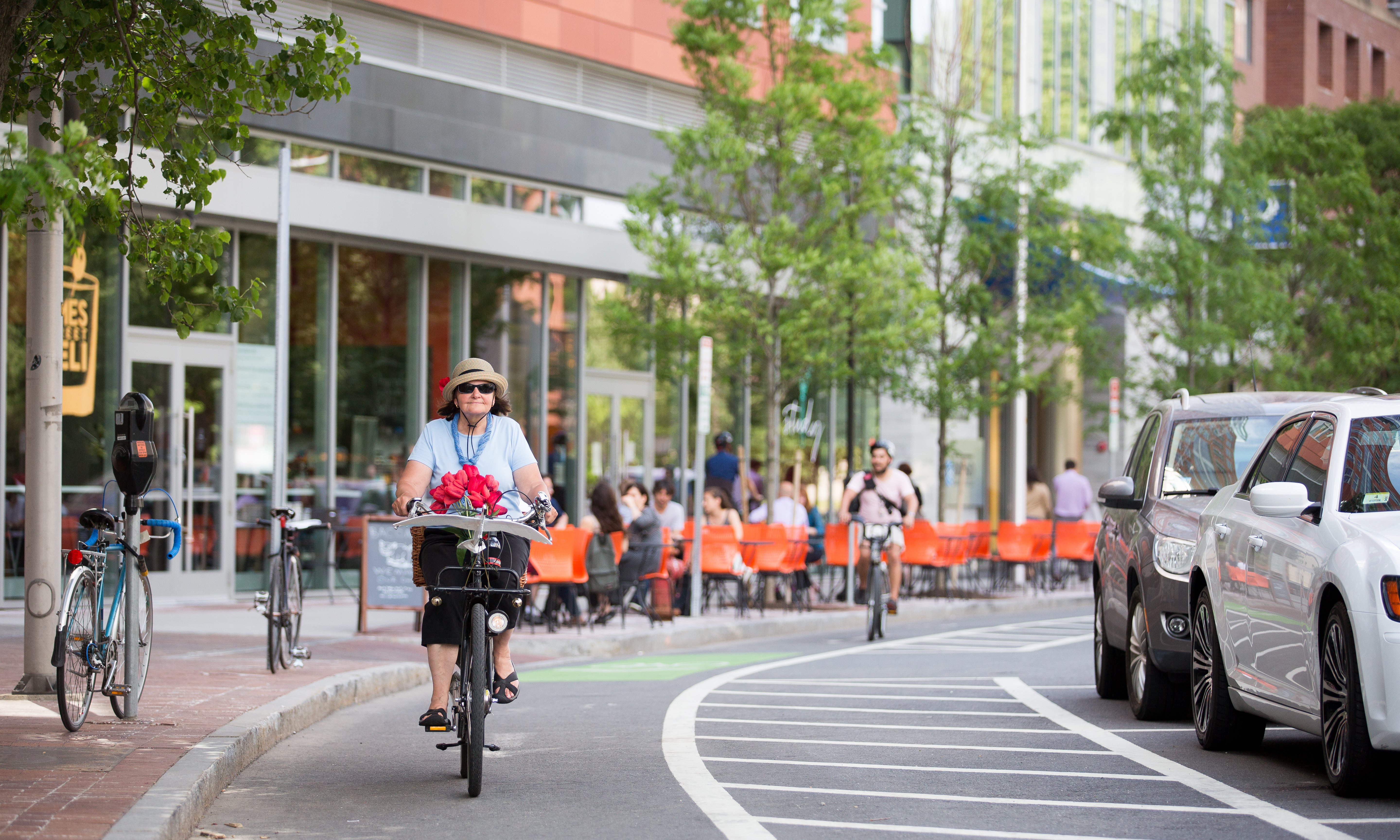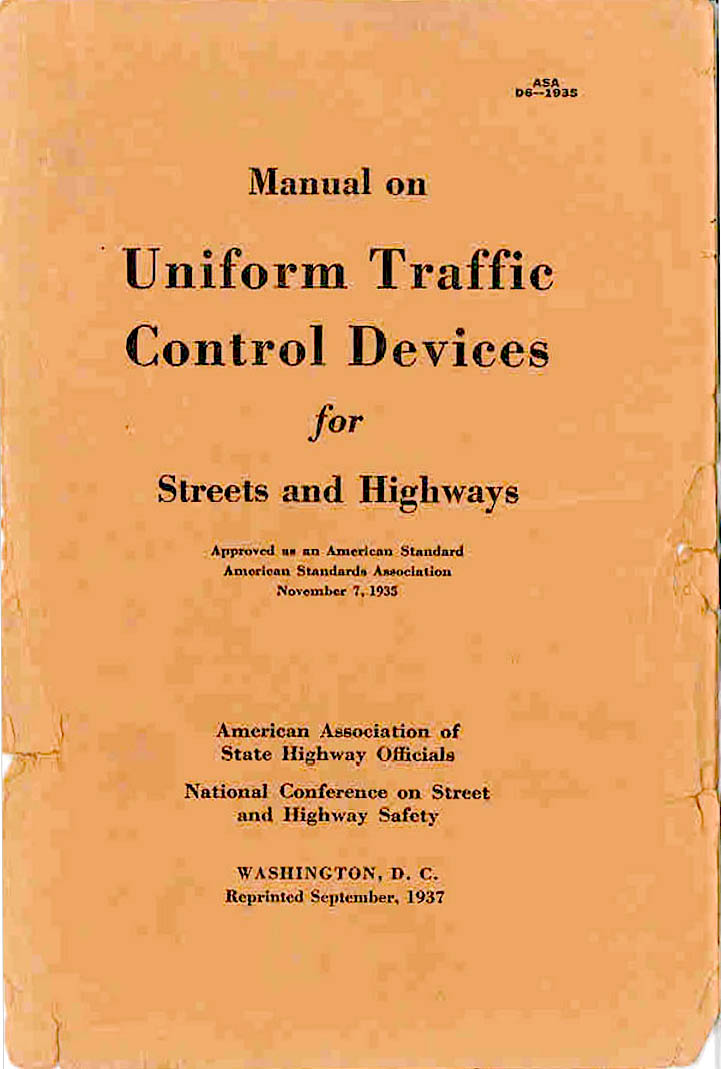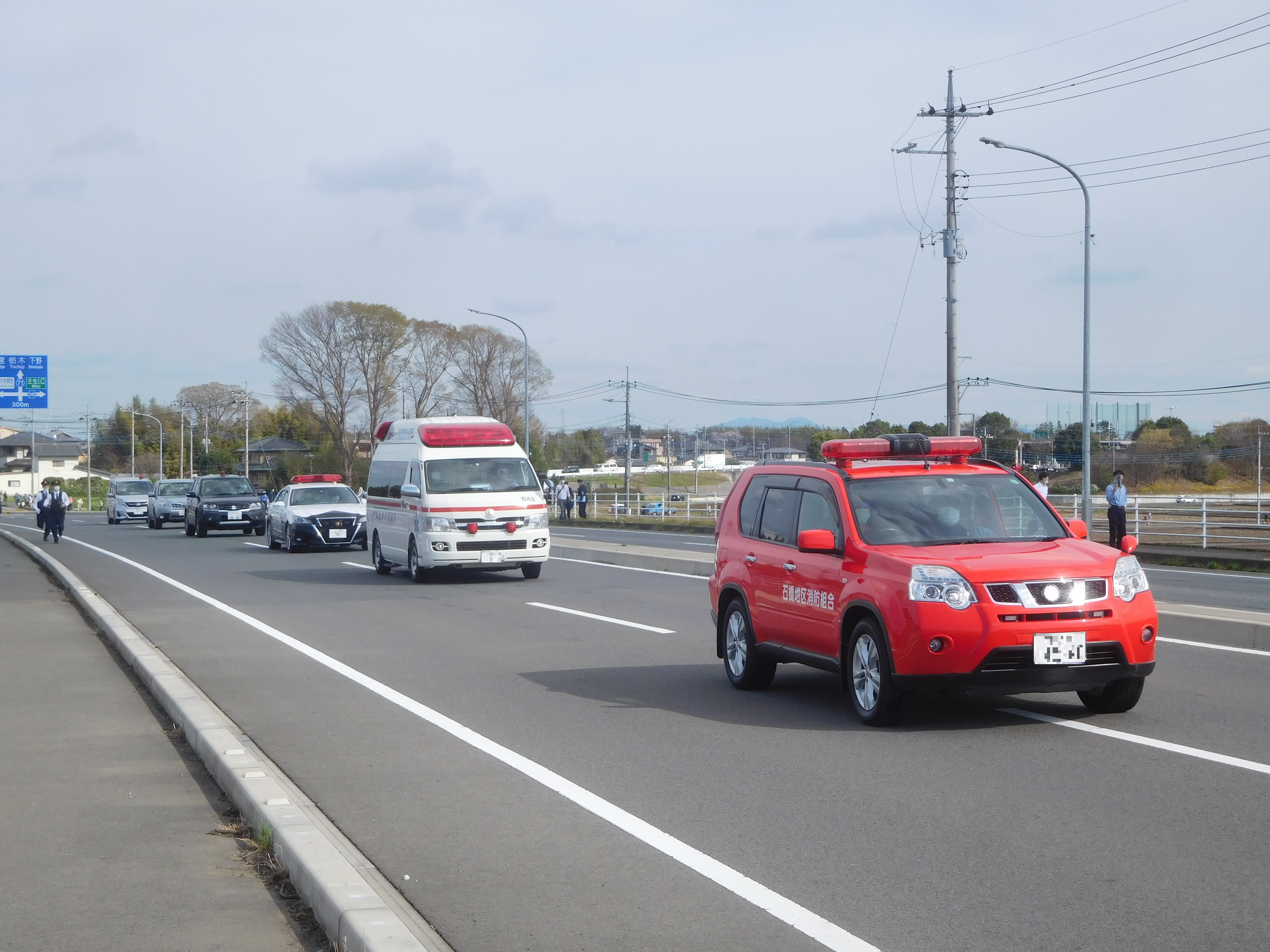|
Diamond Lane
In the United States and Canada, a diamond lane is a special lane on a street or highway that is reserved for specific types of traffic. These lanes are usually marked with white diamonds or lozenges, and hence their name. Diamond lanes are generally the right-most or left-most lane on the road. They are usually implemented to provide ways through traffic congestion, for safety reasons, and to encourage environmentally friendly transportation. A diamond lane may be intended for a specific type of traffic, or for several types. The intended use of a diamond lane is marked by traffic signs. In most areas, violating the rules of a diamond lane is punishable by a fine. Some common examples are: * High-occupancy vehicle lane (HOV), also known as a carpool lane. These are typically freeway lanes intended for multiple occupant or " green vehicles" (such as hybrid or electric cars). * Bike lane, sometimes referred to as segregated cycle facilities. Separating bicycle traffic from ... [...More Info...] [...Related Items...] OR: [Wikipedia] [Google] [Baidu] |
Bike Lane
Bike lanes (US) or cycle lanes (UK) are types of bikeways (cycleways) with lanes on the roadway for cyclists only. In the United Kingdom, an on-road cycle-lane can be firmly restricted to cycles (marked with a solid white line, entry by motor vehicles is prohibited) or advisory (marked with a broken white line, entry by motor vehicles is permitted). In the United States, a ''designated bicycle lane'' (1988 MUTCD) or ''class II bikeway'' (Caltrans) is always marked by a solid white stripe on the pavement and is for 'preferential use' by bicyclists. There is also a ''class III bicycle route'', which has roadside signs suggesting a route for cyclists, and urging sharing the road. A ''class IV separated bike way'' (Caltrans) is a bike lane that is physically separate from motor traffic and restricted to bicyclists only. Effects According to a 2019 study, cities with separated bike lanes had 44% fewer road fatalities and 50% fewer serious injuries from crashes. The relationship w ... [...More Info...] [...Related Items...] OR: [Wikipedia] [Google] [Baidu] |
Reversible Lane
A reversible lane (British English: tidal flow) is a lane in which traffic may travel in either direction, depending on certain conditions. Typically, it is meant to improve traffic flow during rush hours, by having overhead traffic lights and lighted street signs notify drivers which lanes are open or closed to driving or turning. Reversible lanes are also commonly found in tunnels and on bridges, and on the surrounding roadways – even where the lanes are not regularly reversed to handle normal changes in traffic flow. The presence of lane controls allows authorities to close or reverse lanes when unusual circumstances (such as construction or a traffic mishap) require use of fewer or more lanes to maintain orderly flow of traffic. Separation of flows Some more recent implementations of reversible lanes use a movable barrier to establish a physical separation between allowed and disallowed lanes of travel. In some systems, a concrete barrier is moved during low-traffic peri ... [...More Info...] [...Related Items...] OR: [Wikipedia] [Google] [Baidu] |
Manual On Uniform Traffic Control Devices
The ''Manual on Uniform Traffic Control Devices for Streets and Highways'' (usually referred to as the ''Manual on Uniform Traffic Control Devices'', abbreviated MUTCD) is a document issued by the Federal Highway Administration (FHWA) of the United States Department of Transportation (USDOT) to specify the standards by which traffic signs, road surface markings, and signals are designed, installed, and used. In the United States, all traffic control devices must legally conform to these standards. The manual is used by state and local agencies as well as private construction firms to ensure that the traffic control devices they use conform to the national standard. While some state agencies have developed their own sets of standards, including their own MUTCDs, these must substantially conform to the federal MUTCD. The MUTCD defines the content and placement of traffic signs, while design specifications are detailed in a companion volume, ''Standard Highway Signs''. This manual de ... [...More Info...] [...Related Items...] OR: [Wikipedia] [Google] [Baidu] |
Federal Highway Administration
The Federal Highway Administration (FHWA) is a division of the United States Department of Transportation that specializes in highway transportation. The agency's major activities are grouped into two programs, the Federal-aid Highway Program and the Federal Lands Highway Program. Its role had previously been performed by the Office of Road Inquiry, Office of Public Roads and the Bureau of Public Roads. History Background The organization has several predecessor organizations and complicated history. The Office of Road Inquiry (ORI) was founded in 1893. In 1905, that organization's name was changed to the Office of Public Roads (OPR) which became a division of the United States Department of Agriculture. The name was changed again to the Bureau of Public Roads in 1915 and to the Public Roads Administration (PRA) in 1939. It was then shifted to the Federal Works Agency which was abolished in 1949 when its name reverted to Bureau of Public Roads under the Department of Commerce ... [...More Info...] [...Related Items...] OR: [Wikipedia] [Google] [Baidu] |
Amish
The Amish (; pdc, Amisch; german: link=no, Amische), formally the Old Order Amish, are a group of traditionalist Anabaptist Christian church fellowships with Swiss German and Alsatian origins. They are closely related to Mennonite churches, another Anabaptist denomination. The Amish are known for simple living, plain dress, Christian pacifism, and slowness to adopt many conveniences of modern technology, with a view neither to interrupt family time, nor replace face-to-face conversations whenever possible, and a view to maintain self-sufficiency. The Amish value rural life, manual labor, humility and '' Gelassenheit'' (submission to God's will). The history of the Amish church began with a schism in Switzerland within a group of Swiss and Alsatian Mennonite Anabaptists in 1693 led by Jakob Ammann. Those who followed Ammann became known as Amish. In the second half of the 19th century, the Amish divided into Old Order Amish and Amish Mennonites; the latter do not abstain fr ... [...More Info...] [...Related Items...] OR: [Wikipedia] [Google] [Baidu] |
Horse And Buggy
] A horse and buggy (in American English) or horse and carriage (in British English and American English) refers to a light, simple, two-person carriage of the late 18th, 19th and early 20th centuries, drawn usually by one or sometimes by two horses. Also called a roadster or a trap, it was made with two wheels in England and the United States (also made with four wheels). It had a folding or falling top. History A Concorde buggy, first made in Concord, New Hampshire, had a body with low sides and side-spring suspension. A buggy having two seats was called a double buggy. A buggy called a stanhope typically had a high seat and closed back. The bodies of buggies were sometimes suspended on a pair of longitudinal elastic wooden bars called ''sidebars''. A buggy whip had a small, usually tasseled tip called a ''snapper''. In countries such as the United States, the United Kingdom, and Canada, it was a primary mode of short-distance personal transportation, especially between 181 ... [...More Info...] [...Related Items...] OR: [Wikipedia] [Google] [Baidu] |
Airports
An airport is an aerodrome with extended facilities, mostly for commercial air transport. Airports usually consists of a landing area, which comprises an aerially accessible open space including at least one operationally active surface such as a runway for a plane to take off and to land or a helipad, and often includes adjacent utility buildings such as control towers, hangars and terminals, to maintain and monitor aircraft. Larger airports may have airport aprons, taxiway bridges, air traffic control centres, passenger facilities such as restaurants and lounges, and emergency services. In some countries, the US in particular, airports also typically have one or more fixed-base operators, serving general aviation. Operating airports is extremely complicated, with a complex system of aircraft support services, passenger services, and aircraft control services contained within the operation. Thus airports can be major employers, as well as important hubs for tourism a ... [...More Info...] [...Related Items...] OR: [Wikipedia] [Google] [Baidu] |
Taxicab
A taxi, also known as a taxicab or simply a cab, is a type of vehicle for hire with a driver, used by a single passenger or small group of passengers, often for a non-shared ride. A taxicab conveys passengers between locations of their choice. This differs from public transport where the pick-up and drop-off locations are decided by the service provider, not by the customers, although demand responsive transport and share taxis provide a hybrid bus/taxi mode. There are four distinct forms of taxicab, which can be identified by slightly differing terms in different countries: * Hackney carriages, also known as public hire, hailed or street taxis, licensed for hailing throughout communities * Private hire vehicles, also known as minicabs or private hire taxis, licensed for pre-booking only * Taxibuses, also come in many variations throughout the developing countries as jitneys or jeepney, operating on pre-set routes typified by multiple stops and multiple independent passenger ... [...More Info...] [...Related Items...] OR: [Wikipedia] [Google] [Baidu] |
Emergency Vehicle
An emergency vehicle is a vehicle used by emergency services. Emergency vehicles typically have specialized emergency lighting and vehicle equipment that allow emergency services to reach calls for service in a timely manner, transport equipment and resources, or perform their tasks efficiently. Emergency vehicles are usually operated by authorized government agencies, but some may also be operated by private entities where permitted by law. Emergency vehicles are usually given right of way in traffic, and may be exempted from certain basic road laws to reach their destinations in the fastest possible time, such as driving through a red traffic light or exceeding the speed limit; however, this is almost always done with emergency lights and sirens on, to alert traffic that the emergency vehicle is approaching. In some jurisdictions, the driver of an emergency vehicle can face legal action if the driver shows "reckless disregard for the safety of others". Types There are many types ... [...More Info...] [...Related Items...] OR: [Wikipedia] [Google] [Baidu] |
Bus Lane
A bus lane or bus-only lane is a lane restricted to buses, often on certain days and times, and generally used to speed up public transport that would be otherwise held up by traffic congestion. The related term busway describes a roadway completely dedicated for use by buses. Bus lanes are a key component of a high-quality bus rapid transit (BRT) network, improving bus travel speeds and reliability by reducing delay caused by other traffic. A dedicated bus lane may occupy only part of a roadway which also has lanes serving general automotive traffic; in contrast to a transit mall which is a pedestrianized roadway also served by transit. History The first bus lane is often erroneously attributed to Chicago, where in 1939 Sheridan Road was installed with reversible lanes north of Foster Avenue. The setup consisted of three-lanes towards the peak direction (south in the morning; north in the evening), and one contraflow lane. None of the lanes exclusively carried buses, b ... [...More Info...] [...Related Items...] OR: [Wikipedia] [Google] [Baidu] |
Traffic Flow
In mathematics and transportation engineering, traffic flow is the study of interactions between travellers (including pedestrians, cyclists, drivers, and their vehicles) and infrastructure (including highways, signage, and traffic control devices), with the aim of understanding and developing an optimal transport network with efficient movement of traffic and minimal traffic congestion problems. History Attempts to produce a mathematical theory of traffic flow date back to the 1920s, when Frank Knight first produced an analysis of traffic equilibrium, which was refined into John Glen Wardrop, Wardrop's first and second principles of equilibrium in 1952. Nonetheless, even with the advent of significant computer processing power, to date there has been no satisfactory general theory that can be consistently applied to real flow conditions. Current traffic models use a mixture of empirical and Deductive reasoning, theoretical techniques. These models are then developed into Trans ... [...More Info...] [...Related Items...] OR: [Wikipedia] [Google] [Baidu] |









